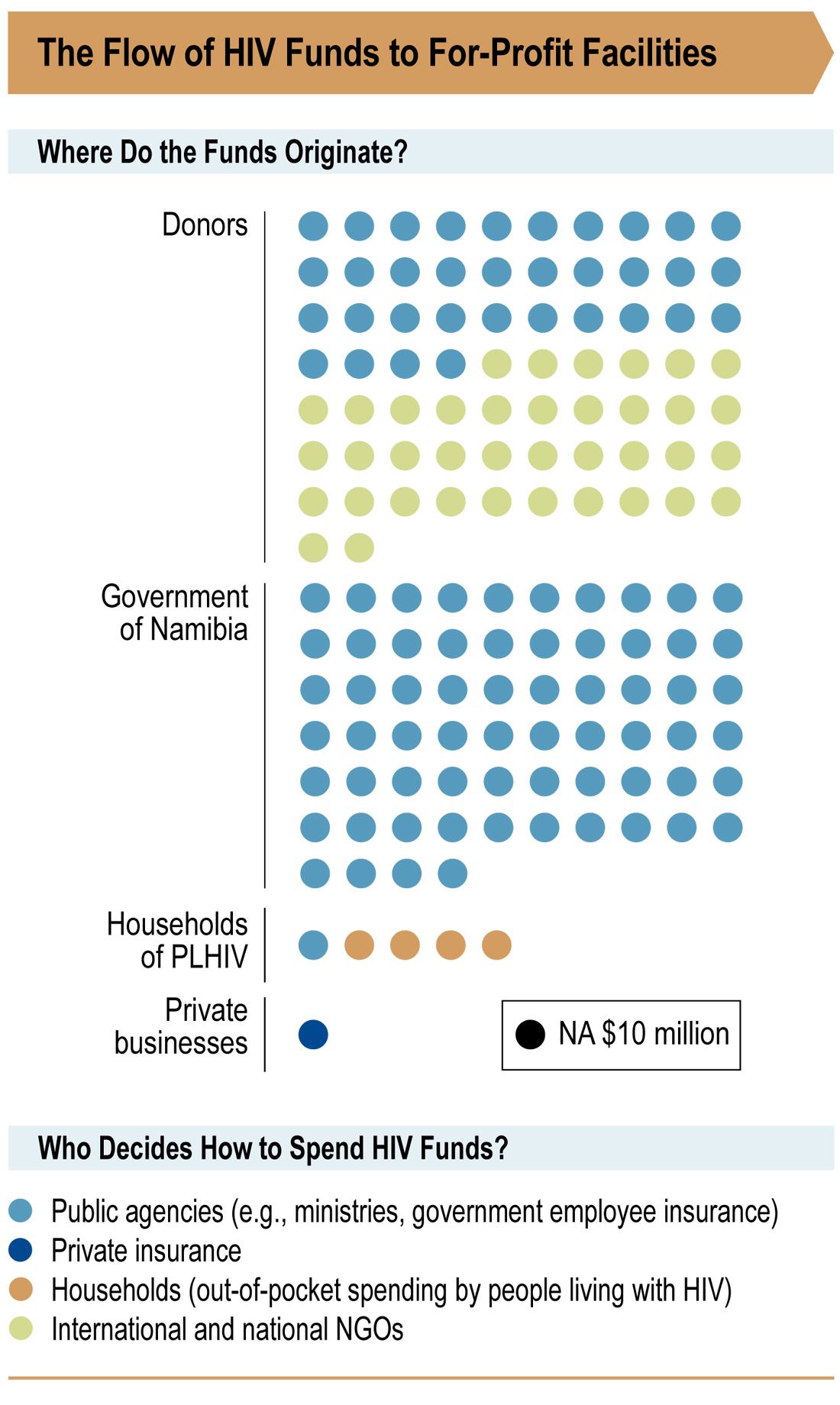The Private Sector’s Role in Providing HIV Services in Namibia
Click the infographic to view and save the image.
Data on past HIV spending in Namibia’s health sector, tracked using the national health accounts and HIV subaccounts methodology, helps explain private sector engagement in the HIV response and can support the government of Namibia’s efforts to improve the sustainability of its HIV programs. The SHOPS project used national health accounts data to track how HIV funds flow through Namibia’s health system and to identify implications for how donors and the government can better work with the private health sector.
Key findings include:
- The HIV response is highly dependent on donors with low levels of private contributions and low out-of-pocket spending on HIV goods and services.
- Despite the availability of subsidized services in public sector facilities, people living with HIV still choose to seek services at private for-profit facilities for HIV care.
- Government employee insurance programs spend more than half of their HIV resources at private for-profit facilities. No other public program spends at for-profit facilities.
- Very little donor funding reaches private for-profit facilities.
Contributor
SHOPS Project
Published
December 2013
Technical Area
Health Financing
Keywords
health insurance
Current Downloads
14
